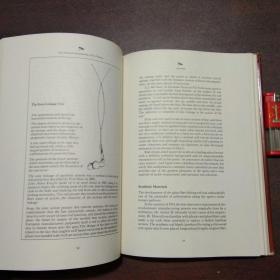Content:
Introduction: Angling, an ancient pastime, has been captivating fish enthusiasts for centuries. One of the most crucial aspects of successful angling is mastering the art of catching bites. Whether you are a seasoned angler or a beginner, understanding how to correctly interpret and react to a fish's bite can make all the difference in your angling experience. In this article, we will explore the essential techniques and tips to help you become a skilled angler and catch more fish.
Choose the Right Equipment: The first step in mastering the art of catching bites is to select the appropriate equipment. This includes choosing the right rod, reel, line, lure, and bait. The ideal equipment depends on the type of fish you are targeting and the conditions of the water body. For instance, a lightweight spinning rod is suitable for small freshwater fish, while a heavy-duty baitcasting rod is ideal for larger saltwater species.
1 Rod: Select a rod that matches the size and strength of the fish you are targeting. A longer rod offers better casting distance and sensitivity, while a shorter rod provides more power and control.
2 Reel: Choose a reel that complements your rod and the type of fishing you will be doing. Spinning reels are versatile and suitable for various fishing techniques, while baitcasting reels are ideal for casting heavier lures and fishing in windy conditions.
3 Line: The type of line you use should be appropriate for the fish species and the water conditions. Monofilament, fluorocarbon, and braided lines all have their advantages and disadvantages. Monofilament is flexible and offers good abrasion resistance, fluorocarbon is nearly invisible to fish and has excellent sensitivity, while braided lines provide high strength and low stretch.
4 Lure or Bait: The choice of lure or bait depends on the fish species and the water conditions. Live bait, artificial lures, and natural baits like worms and insects can all be effective. It's essential to experiment with different options to determine what works best in your specific fishing situation.
Understand the Fish's Behavior: To catch more fish, it's crucial to understand the behavior of the species you are targeting. This includes their feeding patterns, preferred habitats, and preferred food sources. By understanding these factors, you can present your lure or bait in a way that triggers a bite.
1 Feeding Patterns: Fish often feed during specific times of the day, such as early morning, late afternoon, or at night. Pay attention to these patterns and adjust your fishing schedule accordingly.
2 Preferred Habitats: Different fish species prefer different types of habitats, such as shallow water, deep water, rocky areas, or vegetation. By identifying these habitats, you can increase your chances of encountering fish.
3 Preferred Food Sources: Understanding the preferred food sources of the fish you are targeting can help you choose the right lure or bait. For example, some fish may prefer insects, while others may prefer small fish or crustaceans.
Sensitivity and Timing: A key aspect of catching bites is being sensitive to the subtle signs of a fish taking your lure or bait. This includes observing the line's movement, the rod's bend, and the sound of the reel. Here are some tips to improve your sensitivity and timing:

1 Light Tackle: Use light tackle to detect even the smallest of bites. A heavy rod or reel can mask the subtle movements of a fish taking your lure.
2 Pay Attention to the Line: Watch the line closely for any sudden changes, such as a tight line, a pull, or a kink. These are potential signs of a fish taking your lure.
3 Listen to the Reel: The sound of the reel can provide valuable information. A sudden stop or a change in sound may indicate a fish taking your lure.
4 Be Patient: Sometimes, a fish may take a bite without any visible sign. Be patient and maintain tension on your line, as the fish may still be working the bait.
Proper Presentation Techniques: Once you have identified a fish's bite, it's essential to react correctly. Here are some tips for effective presentation techniques:
1 Set the Hook: When you feel a fish taking your lure, immediately set the hook by Jerking the rod sharply or by applying steady pressure to the line. The key is to set the hook quickly but gently to avoid spooking the fish.
2 Play the Fish: After setting the hook, it's crucial to play the fish correctly. This involves controlling the fish's movement, bringing it to the boat or shore safely, and preventing it from escaping.
3 Landing the Fish: Once the fish is close to the boat or shore, it's time to land it. Use a net to gently scoop the fish out of the water, ensuring you don't harm the fish during the process.
Conclusion: Catching bites is an essential skill for any angler. By choosing the right equipment, understanding the fish's behavior, improving your sensitivity and timing, and mastering proper presentation techniques, you can increase your chances of success on the water. With practice and patience, you will become a skilled angler, reeling in more fish and enjoying the rewarding experience of angling.












